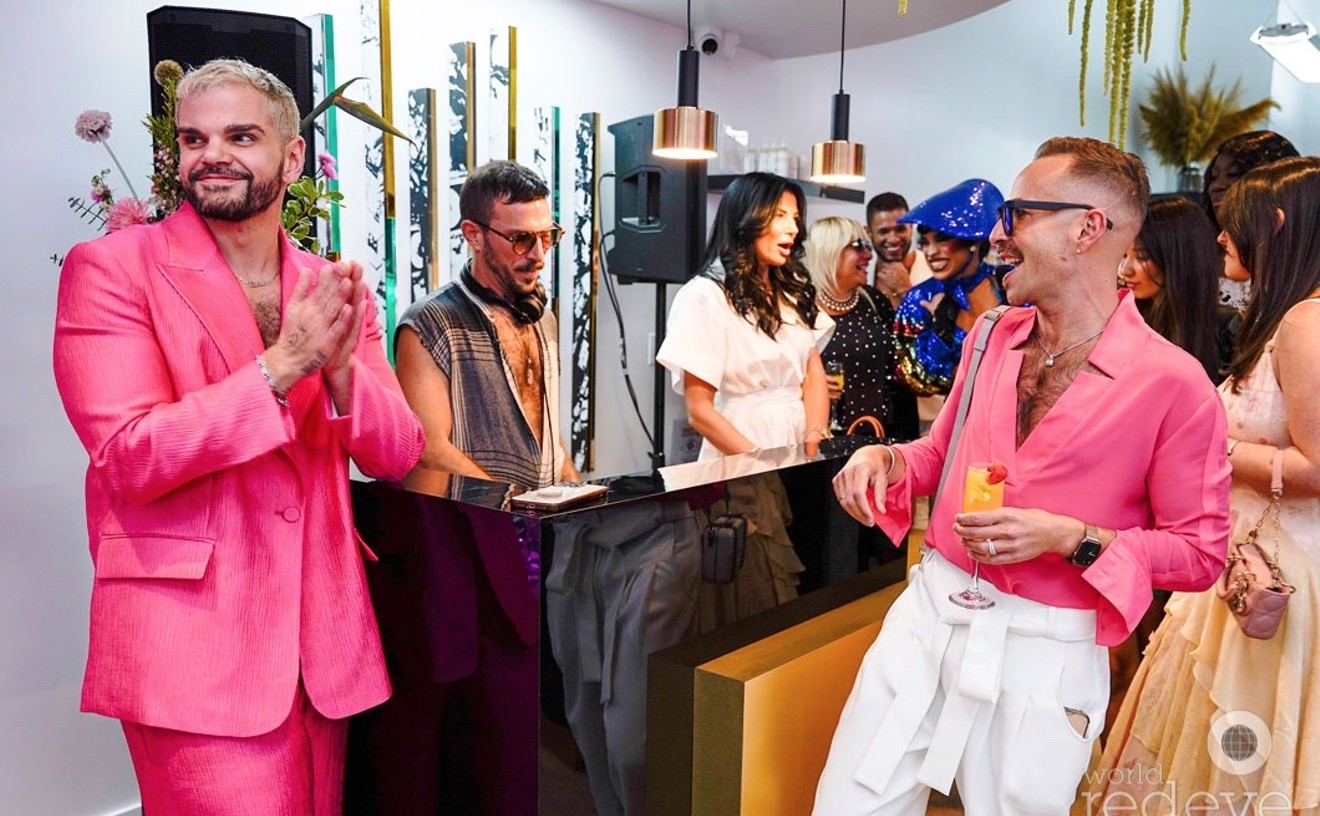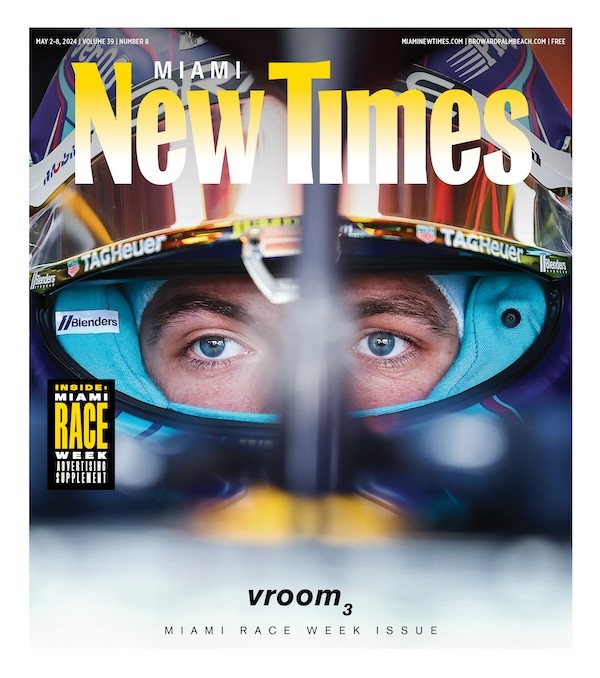As Downton Abbey season three mania sweeps across South Florida -- and the nation -- we're all starry-eyed imagining the ins and outs of life at the turn of the century. And with the introduction of Cora's sassy American mother, more of that attention is aimed at our own shores.
Great Britain is one thing, but what was happening in Miami at at that time? Did life for Miami's upper crust bear any resemblance to that of the Crawleys? Would the Dowager Countess have had a heart attack over the scandalous ways of Miamians, even then?
To find out how the two disparate locales measured up against each other, we spoke with iconic Miami historian and author Arva Moore Parks. She talked to us about American royalty versus English, the sprawling mansions of the 1920s, and the Tiffany's Miami home.
See also:
"Teen Miami" at HistoryMiami Puts South Florida Teenagers in Historical Context
Seven Iconic Moments in Miami History Deserving of Statues
Cultist: Who were the wealthy living in Miami in the 1920s? Were homes lavish and sprawling like Downton Abbey?
Arva Moore Park: Carl Fisher, who developed Miami Beach and who had invented a car headlight and was very, very wealthy, he attracted northern industry types to Miami Beach. Firestone built a home, so did J.C. Penney. They certainly weren't royalty, but you could say that American industrialists in that era would have been considered almost like royalty.
The Grove had a few people too, on Millionaire's Row. On Brickell, Tiffany, the Tiffany, had a house. When you got down into the Grove you had Arthur Curtiss James and he was, I think, the sixth richest man in America and he had a home on Poinsettia Avenue. He owned all the land between Main Highway and Biscayne.
And of course James Deering, he was an international harvester. When his house was built half the town worked on it. He was one of the first. He bought the land in like 1912 and his house was built in 1916 or 1917, so that would have been certainly the leader of the pack. The Matheson family had several houses in the Grove and their money came from chemicals and he was an inventor, kind of like Fisher. A lot had homes in Long Island or in Chicago where the Deerings were from so they built these "winter houses." They were not year-round homes necessarily. And they did hang out with each other, the ones in Miami -- Brickell and Grove people.
Did the wealthy generally employ the townspeople, as the Crawleys employ the lower classes?
We did have a group of very wealthy people here. They didn't interact with the hoi polloi. I think the Mathesons were and still are involved in the community, and were more a part of the community than some of the others. That was a very interesting family, one of the richest besides Deering. They would have had servants. They would have had a staff. Vizcaya had a large staff. He had a farm across the street, so he had everybody from general workers to supervisors so that would have probably been the apex.
How did they live?
All the Fontainebleau property was once the Firestone estate and it was like Vizcaya's. Everybody had Firestone tires and everything. For Miami having these very wealthy people come to town was a big deal. Most were these so-called winter visitors who made their money in American industry. It was the robber baron era, there was no income tax until 1916 and even then it was like it was today. These people had more money than they knew what to do with. They traveled to Europe and had yachts.
Obviously these industrialists were employing Americans in their factories elsewhere, but here in Miami, what were the average people doing for work?
When Vizcaya was built almost a third of the people in Miami worked on it. Contractors, artisan plasterers, landscape people. It wouldn't be like a staff, but Deering did have to have a staff of probably like 20. Between gardeners and maids and people running his farm and butlers. He had a huge estate, his gardens were beautiful. He had a huge staff.
Historian Dorothy Fields, her grandfather worked in Deerings' gardens. Thelma Peters, her grandfather worked in Vizcaya. A lot of black people in the Grove were hired by industrialists. There was a very active black community in the Grove, the majority of which came from the Bahamas.
Kirk Monroe was there in the Grove in late 1880s and I know some of the people from the black communities in the Grove worked for him and he brought people over. Everybody in that era of upper middle income would have had some kind of domestic help. Not a staff, but some kind of help, primarily African Americans. If you were on Miami Beach they would not allow black communities there so the people that worked there had to cross the causeway to get there. The Grove supplied a lot of workers for millionaires on the waterfront.
The women of Downton began cutting their hair and adapting to more of a flapper style dress and more progressive attitudes in 1920. Were Miami women doing the same?
Absolutely. There's a quote in a book, "They bobbed their hair short and their skirts and yelled whoopee" and that kind of sums it up. Women's suffrage was going on and that was a major change. They were cutting their hair and shortening their skirts and not having to wear stockings to cover their legs.
As a mother who raised children in a time of change it wasn't always easy. It was the difference between covering yourself up as a Victorian and having your hair piled on top of your head and having your daughter turn into a flapper. I'm not sure there was ever as much of a jolt between generations as there was then. And they also started perms, you've seen those kind of kinky cuts, and they wore makeup and they drank. It was the Prohibition era. And they had cars, and so these girls who had been chaperoned suddenly were going out in cars with guys without their mothers. Women were also going to college more.
In Downton Abbey women were still expected to marry within their station and adopt a traditional role, although it was slowly beginning to change. How were the societal norms for couples in Miami in the '20s?
I think people tended to marry within their station. They would tend to marry each other because that's who they socialized with. Miss Harris School was a private school on Brickell and a lot of these families' children went there. It was a girl's school. The boy's school was Ransom. It started in the Adirondack Mountains for part of the year and the winter was spent in Coconut Grove. That's how the Mathesons found out about South Florida. They came to visit and they liked what they found in the Grove and William Matheson moved really close by. So Miss Harris had the girls and Ransom had the guys.
They really didn't interact with normal Miamiams though. A few might have. Dr. Jackson, the doctor who came down with Henry Flagler, he would have probably interacted as their doctor. But there were few locals who might have. Mostly it was this winter group who were with each other.
Our two cents: Sounds like celebs flocking to Star Island soirees today, doesn't it? Some things never change. And despite some similarities between the two towns, an ocean apart, somehow we suspect life in the tropics wouldn't have agreed with the Dowager Countess. Not hardly.
Follow Cultist on Facebook and Twitter @CultistMiami.










